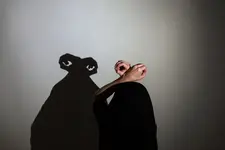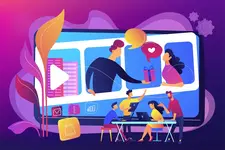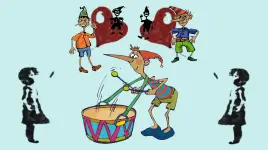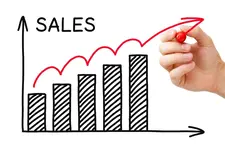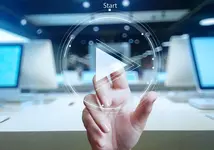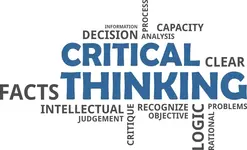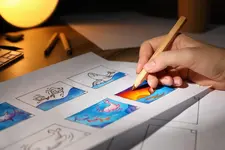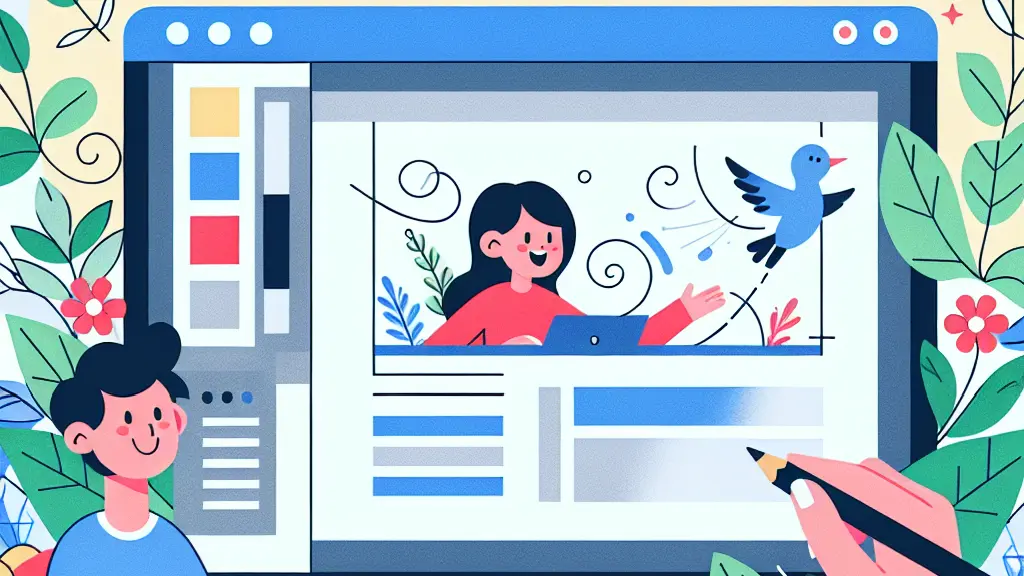
Table of contents
Visual storytelling with animation is a popular way to tell stories and share information. It is used in many places, like news and media, and e-commerce. A recent
study
showed that 86% of businesses use video for marketing, and 76% of marketers say video helps sell products.
Animated storytelling uses graphics, images, pictures, and videos to make people pay attention and feel things. It is a growing trend in design, and designers are using animation to bring messages to life. Animators use 12 principles of animation to turn scripts into moving stories. These principles include squash and stretch, anticipation, staging, straight ahead action and pose to pose, follow through, and more.
If you want to learn more about visual storytelling with animation, there are many resources available. The
Berkeley Advanced Media Institute
offers a course on storytelling through animation.
Davis Publications
has a high school art lesson on visual storytelling.
Brafton
has examples and an infographic on what visual storytelling is and how to use it.
The Power of Visual Storytelling

Visual storytelling through animation is a great way to tell stories that are hard to understand or talk about. It can show complex ideas and emotions in a way that makes people pay attention. This is why animation is often used in movies, TV shows, and video games.
In recent years, more and more people are using visuals in their stories. This is because people are more likely to pay attention to things that they can see. So if you want to tell a story that will capture people’s attention, you should use visuals.
(a) Why Visuals Matter
Visuals are a great way to get people’s attention. A
study
found that visual content is 40 times more likely to be shared on social media than other types of content. This is because visuals are more interesting and easier to remember than text alone.
Visuals can also be used to show complex ideas and emotions in a way that words cannot. This is because visuals are processed by the brain more quickly and efficiently than text. A
study
by MIT found that the human brain can process images in as little as 13 milliseconds.
Here are some examples of how visuals can be used to grab and hold attention, convey complex ideas, and express emotions:
- Charts and graphs can be used to show data in a way that is easy to understand. This can be helpful for explaining complex concepts or trends.
- Images can be used to tell stories or evoke emotions. This can be a powerful way to connect with people and make them remember your message.
- Videos can be used to show real-world examples or explain how something works. This can be a great way to engage people and keep them interested.
(b) The Role of Storytelling
A good story can take people to another world and make them think. It can also make hard things easy to understand.
The best visual stories are emotional and memorable. They should have a beginning, middle, and end. They should also be exciting and keep people guessing. A study by Harvard Business Review found that stories with this structure are more likely to be remembered and shared.
Visual storytelling through animation is a powerful tool for content creators and marketers. It can help them capture and keep people’s attention. By using visuals to show complex ideas and emotions, and by structuring their stories in an exciting way, content creators can make their stories memorable and engaging.
The Art of Animation

Animation is a way to make pictures move. It can be used to tell stories, explain things, or just make people laugh. There are many different types of animation, but they all have one thing in common: they use pictures that are shown one after the other, very quickly, to create the illusion of movement.
Animation is a powerful tool that can be used to reach people of all ages. It can be used in movies, TV shows, video games, and even on the web. In this section, we will learn about the basics of animation and the different types of animation that content creators can use to tell their stories.
i. The Basics of Animation

Animation is the art of making pictures move. There are many ways to make pictures move, like drawing them, taking pictures, or using computers. No matter how you make them move, all animations use the same basic ideas.
One important idea in animation is keyframes. Keyframes are the main points in an animation where the action changes. By putting keyframes in the right places, animators can make their characters and scenes look like they are moving.
Another important idea in animation is timing. Timing is how fast the action happens and how much time there is between each movement. Good timing can make an animation look smooth and believable. It can also make an animation feel more emotional.
ii. Different Types of Animation
There are many ways to make animations. Some of the most popular ways are:
- Drawn animation: This is when each frame of the animation is drawn by hand.
- Stop-motion animation: This is when you make a physical model or puppet and move it a little bit between each frame to make it look like it’s moving.
- Computer-generated animation: This is when you use software to make characters and scenes move.
- Motion graphics: This is when you make text, graphics, and other visual elements move in a video or presentation.
No matter what kind of animation you use, the most important thing is to make sure it’s good. This means paying attention to the details, like how the characters look and how they move, and using tools like Adobe Creative Cloud, After Effects, and Illustrator to make your ideas come to life.
The animation industry is growing really fast. A recent
study
says that it will be worth $519.6 billion by 2028. This is because people want to watch more animated movies, TV shows, and ads.
Animation is a powerful way to tell stories and share ideas. By learning how to make animations, you can create something that people will love.
The Impact of Animation in the Digital World

Animation is a big part of the internet. With social media and online stuff, animation is a popular way to show people things and tell stories. In this part, we will talk about how animation is used in the fast-paced digital world and how it is used on social media and online platforms.
(a) Animation in the Fast-Paced Environment
In the digital world, people are always busy and have short attention spans. So, animation is a good way to grab their attention. A
study
found that social media posts with video content get 48% more views than those without. Animation is a good way to quickly and clearly show information, which is perfect for social media.
Animation is also becoming more popular in e-commerce. A study by
Tubular Labs
found that 73% of consumers are more likely to buy something after watching a video that explains it. Animation is a good way to show off a product or service in a visually appealing way, which makes people more likely to buy it.
(b) Animation in Social Media
Animation is a way to make moving pictures. It is becoming popular on social media because it is easy to make and share short animated videos. A
study
found that people interact with animated videos on Instagram 21.2% more than they do with static images.
Animation can also be used to explain complex things in a way that is easy to understand. Infographics and explainer videos are becoming more popular on social media, and animation is a great way to make these types of videos more interesting.
(c) Animation in Online Platforms
Animation is becoming more popular on online platforms. Websites and apps use animation to make their sites more fun and interesting. Websites with animation have
80% more people sign up
for their services than websites without animation.
Animation is also being used in online learning. A study by the University of California found that animation can help students learn better. Animation can make complex ideas easier to understand.
Animation is a big part of the digital world. It is a good way to share information quickly and easily. Animation is becoming more popular on social media and online platforms. If you want to get people’s attention on social media or make your website more interesting, animation is a good tool to use.
The Power of Visual Effects

Visual effects are very important in animation. They make it possible to create beautiful pictures that catch people’s eyes and make them think. Visual effects can be simple, like adding depth and texture, or they can be complex, like bringing imaginary creatures to life. Visual effects are a big part of modern animation.
1. The Role of Visual Effects in Animation
Visual effects are used in animation to make the world seem real and believable, even if it doesn’t exist. They help to create a sense of depth, texture, and movement that makes the viewer feel like they are part of the story. Visual effects can also be used to explain complex things in a way that is easy to understand and fun to watch.
A study by
Nielsen
found that people are more likely to watch and remember shows that have visual effects. In fact, shows with visual effects were found to be 80% more memorable than those without. This shows how important visual effects are in keeping people’s attention.
Here are some examples of visual effects in animation:
- The Matrix : The slow-motion bullets in this movie were created using visual effects.
- Game of Thrones : The dragons in this show were also created using visual effects.
-
The Hulk
: The Hulk in the Marvel movies is a computer-generated character.
These are just a few examples of how visual effects are used in animation. Visual effects can be used to create anything that is not possible in the real world, and they can help to make animation more realistic, believable, and entertaining.
2. Different Types of Visual Effects
There are many kinds of visual effects used in animation. They each have a special purpose and make different things happen. Some of the most common visual effects are:
- Lighting effects: These make things look deep and textured by pretending how light hits objects in the scene.
- Particle effects: These make natural things like fire, water, and smoke look real.
- 2D and 3D animation: These make characters and objects move and look alive.
- Matte painting: This makes backgrounds and settings look real, even if they would be too expensive or hard to make in real life.
Visual effects are a big part of modern animation. They are becoming more important as technology gets better. With the right use of visual effects, animators can make amazing works of art that will entertain and inspire people of all ages.
A recent article by
Brafton
found that visual storytelling is a very powerful way to market things. This shows that the power of visuals and effects is not just limited to animation, but is used in all kinds of media.
In conclusion, visual effects play a big role in animation. They make things look real and believable, which keeps people interested. There are many different kinds of visual effects that animators can use to make amazing works of art.
The Importance of Tone and Transitions in Animation

In animation, tone and transitions are two important things that can make or break a story. The tone is the feeling of a scene, and transitions are the way scenes change. When done well, tone and transitions can make a story feel smooth and interesting.
The tone is important because it sets the feeling for the whole story. It can be used to make the story feel scary, exciting, or even funny. If the tone is not clear, the audience might not understand the story’s feelings.
Transitions are also important because they help scenes flow together. A bad transition can be jarring and make the audience lose interest. On the other hand, a good transition can make the story feel more interesting and make the audience feel the story’s feeling more.
There are many types of transitions, like cuts, dissolves, wipes, and fades. Each transition has a different feeling and makes the story flow differently. For example, a quick cut can make the story feel fast-paced, while a slow fade can make the story feel more calm.
In conclusion, tone and transitions are important things in animation that can make the audience feel the story’s feelings. Animators need to think carefully about tone and transitions when they make a story. By using tone and transitions well, animators can make a story that the audience will remember.
Data Visualization through Animation
Data visualization through animation is an effective way to communicate complex data in a visually appealing and easy-to-understand manner. Animation can bring data to life and help viewers understand the information presented. According to a study conducted by
Forbes
, 59% of senior executives prefer to watch a video rather than read the text if both are available on the same page.
Animation can be used to show changes over time, highlight trends, and compare data points. For example, a line graph can be animated to show the changes in a stock price over a period of time. The animation can highlight the peaks and troughs in the stock price and help viewers understand the trends.
Another example is a bar chart animated to show the changes in sales figures over a period of time. The animation can highlight the growth or decline in sales and help viewers understand the performance of the business.
Data visualization through animation can also be used to tell a story. According to
Microsoft Research
, animation techniques can enhance the viewer experience and entice the viewer to consume the entire video. Animation can be used to create a narrative that engages the viewer and helps them understand the information presented.
There are many tools available for creating data visualizations through animation, including Tableau, Microsoft Power BI, and Adobe After Effects. These tools allow users to create animations that are visually appealing and easy to understand.
In conclusion, data visualization through animation is an effective way to communicate complex data. Animation can bring data to life, highlight trends, and tell a story. There are many tools available for creating data visualizations through animation, and it is becoming increasingly popular among senior executives.
Animation in Journalism and Business Communications

Animation has become an increasingly popular tool for journalists and business communicators to convey information and tell stories in a visually engaging way. In journalism, animation can be used to explain complex topics, visualize data, and bring stories to life. In business communications, animation can be used to create explainer videos, training materials, and marketing content.
According to a study by
wyzowl
, 86% of businesses use video as a marketing tool, and 85% of those businesses use animation as part of their video content. This shows the growing importance of animation in business communications.
In journalism, animation has been used to create award-winning multimedia stories. For example, The New York Times used animation to tell the story of a deadly avalanche on Everest, and The Guardian used animation to explain the Panama Papers scandal. These animations helped to make complex stories more accessible to a wider audience.
In business communications, animation can be used to create explainer videos that simplify complex topics. For example, a company that sells software could create an animation that explains how the software works, making it easier for potential customers to understand the product. Animation can also be used to create training materials for employees, making it easier for them to learn new skills.
Producers of animation in journalism and business communications have the task of creating engaging visuals that convey information in an effective way. They must work closely with writers to ensure that the animation accurately reflects the story or message being conveyed. Additionally, they must have a strong understanding of animation techniques and software to create high-quality animations.
Overall, storytelling animation makers have become important and visual storytelling has become an important tool for journalists and business communicators to tell stories and convey information in a visually engaging way. As more businesses and media outlets turn to animation, it is likely that we will see even more creative and innovative uses of animation in the future.
